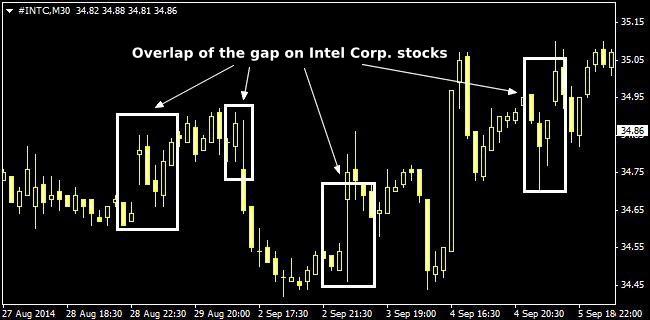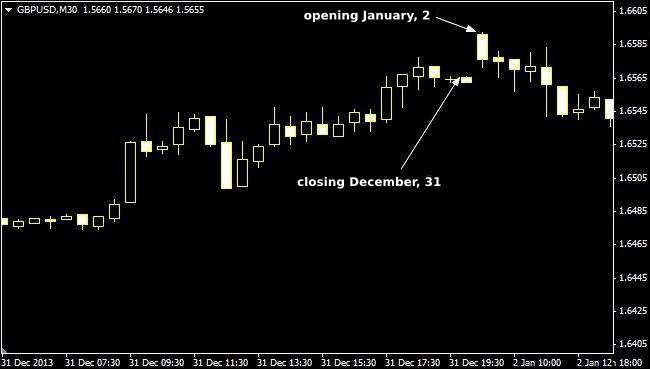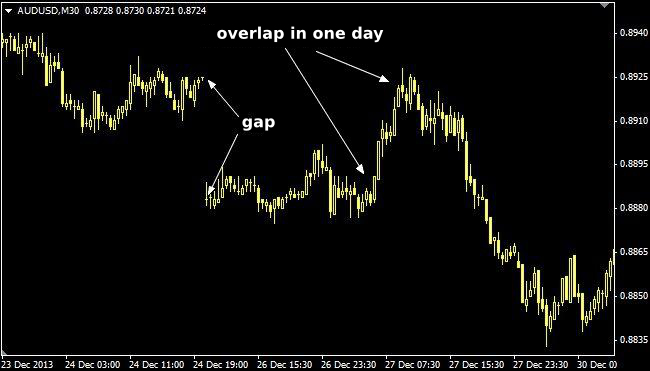
Gap in Forex trading means "jump" or "break", and this term is successfully caught in the financial markets for the characterization of a significant price break formed at the junction of the daily trading sessions.
The first studies of the future behavior of price after the gaps were conducted in the stock market, which is quite logical, given the strict regulations of the commission of stock exchange transactions and the number of traded stocks. After numerous experiments and observations, special strategies emerged, where trading on gaps became central, as it turned out that such price hikes on some shares "overlap" shortly after the opening the trading sites.
Of course, later on, this technique has been optimized for the foreign exchange market as well, but before proceeding to a detailed study of it, let’s pay attention to some important theoretical aspects, and we shall understand a cause of gaps.
Why trading on gaps became so popular in the stock market
Surely, some of the readers have already traded stocks, but we will recall for beginners that operation on the stock exchange can be performed from Monday to Friday strictly within certain hours, while in the rest of the time trading is closed. Accordingly, when the market is down, there is a set of events that are important for issuers of stocks (as an example, the report of the structural division¸ statements of politicians, natural disasters, etc.), i.e. after closing of trading the facts keep coming, and they will be reflected in the first quotations of a new day.
As a result, a significant gap is formed on many stocks between the last price of yesterday and the first quotation of a new day, which, in fact, was not "traded", as many orders were not executed, and major traders who gained position did not implement their plans (if I may say so), so under the influence of all factors, the price begins to strive in the direction opposite to the gap.

Many speculators quickly figured out how to make money on this phenomenon, as after the gap, the market sees high liquidity, which allows you to easily take an asset at a good price. In this case, trading on the stocks on gaps does not require the use of specific indicators, we need only the volume and, of course, you must be familiar with the tool and all the latest related news to soberly assess the probability of rolling back after the gap.
Trading on gaps optimized for the foreign exchange market
The role of certain events was mentioned above not for nothing, as some force majeure and government reports have a similar impact on the foreign exchange markets, but it should be noted that, unlike the stock market, Forex operates 24/5, so the gap can only be caught on Monday, and all the rest of the week you will either not be trading or working on other strategies.
You should also take into account the difference in the regulations of the dealing centers, as some of them close trading on Friday an hour earlier than the others, resulting in a false "jump". To avoid similar situations, it is recommended to trade in DCs, the running time of which is strictly tied to Greenwich, or at least check the values of other companies with their quotes.
Trading on gaps is not much more complicated than the same name strategy in the stock market, but to obtain stable profits you will have to follow some strict rules. Firstly, the gaps are best traded on the most liquid pairs in which both currencies belong to the developed countries – as an example, EUR/JPY, GBP/USD and AUD/USD. Of course, the choice of a pair should be based on the background information, because if there is a continuous stream of "negative" in the region, the gap may be not “overlapped”.
Secondly, the gap in points must be at least 20% of the average volatility of the pair calculated over the past 20 days (in other words – in the last 4 weeks). ATR is recommended to use as an auxiliary indicator for calculations, and if the opening price on Monday is different from Friday's close by 5-10 points, the signal is better to ignore.

And the last rule: after the opening of the market, you must wait for the first 30 minutes, as the price in early trading is either at the level of the opening (+/- 5 points), or moving toward the gap due to the psychology of traders and market structure (the sequence of execution of orders).
Let’s study a few examples
In fact, search for gaps appeared a non-trivial task even on history ¬– they are so rarely found even at the junction of the weekly sessions, but studying the pound sterling, we came across a classic, you can even say the ideal, situation of overlapping the gap:

In this case, the gap appeared immediately after the new year, which is quite a common phenomenon – in particular, on a pound a similar situation is observed almost every year, but the European currency can only envy such stability.
Trading on gaps is also popular on the Australian dollar, as price spikes are formed on the Aussie frequently and are mainly due to fundamental data – in particular, on Saturday and Sunday, China (one of the leading importers of Australian production) publishes much important statistics, in addition, the weekend feeds can have the news from the mining industry, which makes a significant contribution to Australia's GDP. Below is an example of a gap on the Australian:

As for the stop-losses and take-profits, in this case you will have to optimize the model for each pair, and this topic is related to statistics and deserves special attention, so we won’t cover it today – instead, we’ll better pay attention to some features of this method and make a brief conclusion to seal the content.
Trading on gaps: advantages and disadvantages
Potentially lucrative entry points were presented in the above examples, but if we consider the data arrays, the result, or, in other words, the probability of overlap of the gap, will be very modest, although the outdated books and materials promise movement towards the prices of the last day with 70% probability.
Besides, you should not rush when there is too large gap, as these situations are not the result of conventional speculation, and, most likely, are due to the really important events that the market will trade by inertia for another few days.
But despite serious shortcomings, trading on gaps has several advantages. Firstly, it does not require concentration, it is enough to assess the situation once a week, secondly, the algorithm does not use complex computation, a maximum is consideration of ATR values, which are also automatically calculated, and, thirdly, regardless of whether the trader wants it or not, they will have to study the fundamental analysis at least in general terms, which would be useful anyway.
Social button for Joomla


